Name SS Conte Biancamano Maiden voyage 20 November 1925 Length 204 m | Launched 23 April 1925 Beam 23 m | |
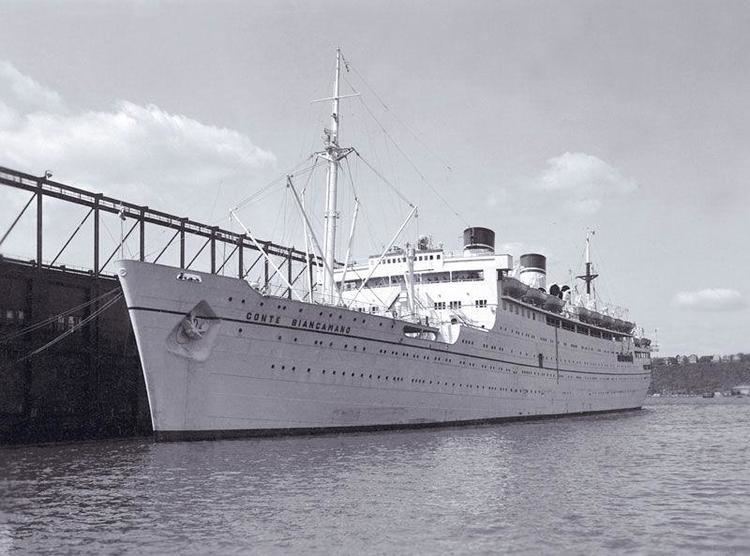 | ||
Operator 1925–1932 Lloyd Sabaudo1932–1936 Italian Line1936–1940 Lloyd Triestino1940–1941 Italian Line Fate Seized by the United States in December 1941 Builder William Beard and Company | ||
Ss conte biancamano 1925 1960
Conte Biancamano was an Italian liner launched in 1925. The name was chosen in honor of Humbert I Biancamano, founder of the Savoy dynasty. She was built in the Scottish shipyard William Beardmore & Co. in Dalmuir, near Glasgow. She was built for the Genovese shipping company Lloyd Sabaudo, operator of the Conte Rosso and Conte Verde. The engine, equipped with two steam turbines double reduction unit and two propellers, allowed her to reach a speed of 20 knots, and vented in two funnels. She housed 180 passengers in first class, 220 in second class, 390 in economic class and 2,660 in third class.
Contents
- Ss conte biancamano 1925 1960
- Ss conte biancamano 1920s 1950s
- First years of service
- USS Hermitage AP 54
- A return to Italy
- References

Conte Biancamano was the first of two sister ships, her sister Conte Grande not seeing completion until 1927.
Ss conte biancamano 1920s 1950s
First years of service

Conte Biancamano was launched 23 April 1925, and made her maiden voyage on 20 November 1925 from Genoa to New York, sailing, as expected, on a direct route to North America. The ship, provided with all the most innovative amenities of its time, was intended primarily as a luxury liner.
The last trip for the Lloyd Sabaudo departed from Genoa to New York on 25 November 1932.
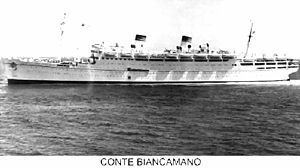
In 1932, Lloyd Sabaudo, together with other Italian shipping companies, merged to form the famous Italian Line. The Conte Biancamano was then used for direct routes to South America. This was continued for six trips, the last of which began on 1 July 1932.
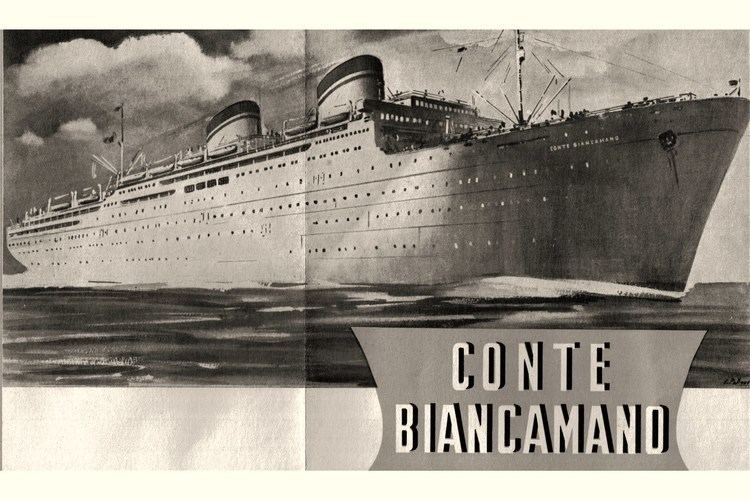
In 1934, she was used for military purposes. She carried troops and military equipment on behalf of the Ministry of the Navy in preparation for the war in Ethiopia.
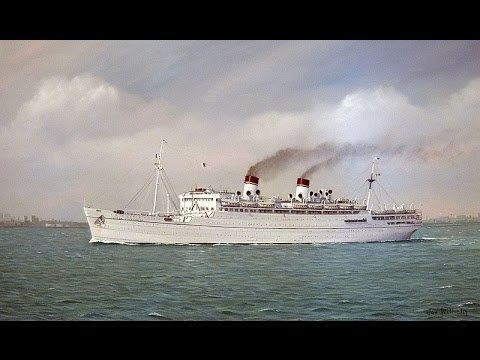
In 1936, she was transferred to Lloyd Triestino, one of the companies in the group, which took a direct route to the Middle East.
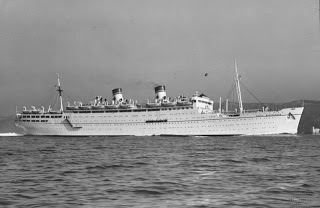
In March 1939, the ship carried the first team of climbers (led by the mountaineer Fritz Wiessner) to attempt the summit of the Himalayan peak K2. Scenes of the team on board feature in a BBC documentary titled 'Mountain Men: The Ghosts of K2'.
In 1940, she returned to Italian Line and was used for a trip from Genoa – Naples – Panama – Valparaiso – Panama.
USS Hermitage (AP-54)
At the start of the Second World War, she was seized and interned in the Panamanian port of Cristóbal, where she was moored. In December 1941, with the entry of the United States into the war, she was seized by the United States. She was converted into a troop transport and commissioned into the United States Navy as USS Hermitage (AP-54) in 1942. The conversion work was carried out in Philadelphia and when completed the ship could accommodate up to seven thousand men. The ship was armed with one 127/38mm gun and six 76/50mm guns.
On 8 November the allies began the invasion of North Africa, called Operation Torch. USS Hermitage departed from New York on 2 November carrying 5600 and transported troops that landed in Casablanca on 10 and 25 November. Later, on 11 December, she returned to the United States and was then used in the Pacific during 1943.
Following the Normandy Landings, she made several trips between Europe and the U.S. to transport troops and return wounded prisoners, the first of which was on 16 June 1944. She was at Le Havre on 8 May 1945, the day of Germany's surrender. After the end of hostilities, she was used for the repatriation of thousands of American veterans of war, first from Europe and then the Pacific. She was withdrawn from service on 20 August 1946. During her service with the U.S. Navy, she traveled over 230,000 miles and carried 129,695 soldiers from different nations.
A return to Italy
In 1947, the ship was returned to Italy and underwent refit and modernization at a shipyard in Monfalcone in 1948. Structural changes saw her bow replaced with a sleeker design, as well as an increase in length overall. Interior changes included more passenger accommodations, increasing her capacity to 252 first-class passengers, 455 in cabin class, and 893 in economy class.
The refit also saw her name Conte Biancamano restored. With her structural and interior refit and modernization completed, she became the premiere ocean liner of the renewed Italian merchant fleet. Her interior refit was made possible through the collaboration of painters such as Massimo Campigli, Mario Sironi, and Roberto Crippa, as well as decorative design work by Gustavo Pulitzer and Giò Ponti. Art work including sculptures made by Marcello Mascherini were placed on the ceiling of the grand hall depicting the myth of Jason and the Golden Fleece.
On 14 July 1949, Conte Biancamano was placed on the Genoa – Buenos Aires route until 21 March 1950 when she was moved to the Genoa – Naples – Cannes – New York route.
On 26 March 1960, she began her last voyage on the Genoa – Naples – Barcelona – Lisbon – Halifax – New York route and on her return voyage. After 364 crossings of the line, during which she had carried 353,836 passengers which were put up for disarmament, and started off the demolition, which took place in La Spezia the following year. In 1964, during the ship's scrapping, the bridge, some first-class cabins and the large ballroom were dismantled and reassembled in the Air and ship pavilion of the National Museum of Science and Technology "Leonardo da Vinci" in Milan.
